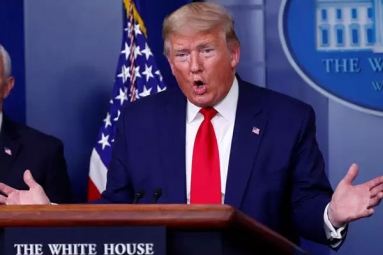‘Keep STEM Talent Act of 2019’, This New Bill Can Be a Boon for Indian Students
June 08, 2019 09:51
Four United States Democratic Party senators have introduced a bill which would exempt international students with advanced STEM degrees from American universities from the restrictive per-country green card caps.
The bill, ‘Keep STEM Talent Act of 2019’ aims at removing unfair barriers for STEM (Science, Technology, Engineering, and Maths) educated international students who want to work in the United States after completing their degrees.
Owing to a per-country limit for a green card and the heavy influx of the Indian diaspora in the U.S., CATO Institute, a U.S. based think-tank, in an earlier study pointed out the wait time for Indians with advanced degrees was as high as 151 years. Therefore, this bill, if enacted is good news for Indian students in the U.S., as STEM courses are a big draw.
An official statement issued by Senator Harris explains the contours of the bill, under which a STEM graduate could obtain lawful permanent residence (green card) if two conditions are met.
First, he or she has to obtain a job offer or employment from a U.S. employer in a field related to his/her degree. The pay for this position should be above the media wage level, in that particular geographic area.
Second, the concerned employer must have obtained approved labor certification for this job position. This certificate requires the Secretary of Labor to determine and certify that no qualified U.S. workers are available for the position and that the wages and working conditions of U.S. workers are not adversely affected by the hiring of the foreign worker.
The U.S. issues 1.40 lakh employment-based green cards annually. However, not more than 7 percent can go to nationals of any one country. With a high influx of the Indian diaspora in the U.S., it has resulted in a heavy backlog.
CATO Institute had broken down this backlog for the Indian immigrants. As of April 20, 2018, there were 6.32 lakh Indian immigrants, their spouses and minor children in the queue for a green card. The shortest wait was for the highest skilled category (EB-1) which was of six years, approximately.
EB-3 immigrants or those having a bachelor ’s degree had a wait time of about 17 years. The biggest backlog was for EB-2 category, who had advanced degrees.
At current rates of visa issuances, they will have to wait 151 years for a green card. Obviously, unless the law changes, they will have died or left by that point, CATO had pointed out.
Senator Harris added in her statement: “We have invested in these students who have learned at our universities and we must do everything we can to keep their talent here. I am proud to join my colleagues on this important legislation which will ensure the U.S. remains competitive in the global economy, and hardworking students are welcome on our campuses and in our country.”
By Sowmya Sangam



















